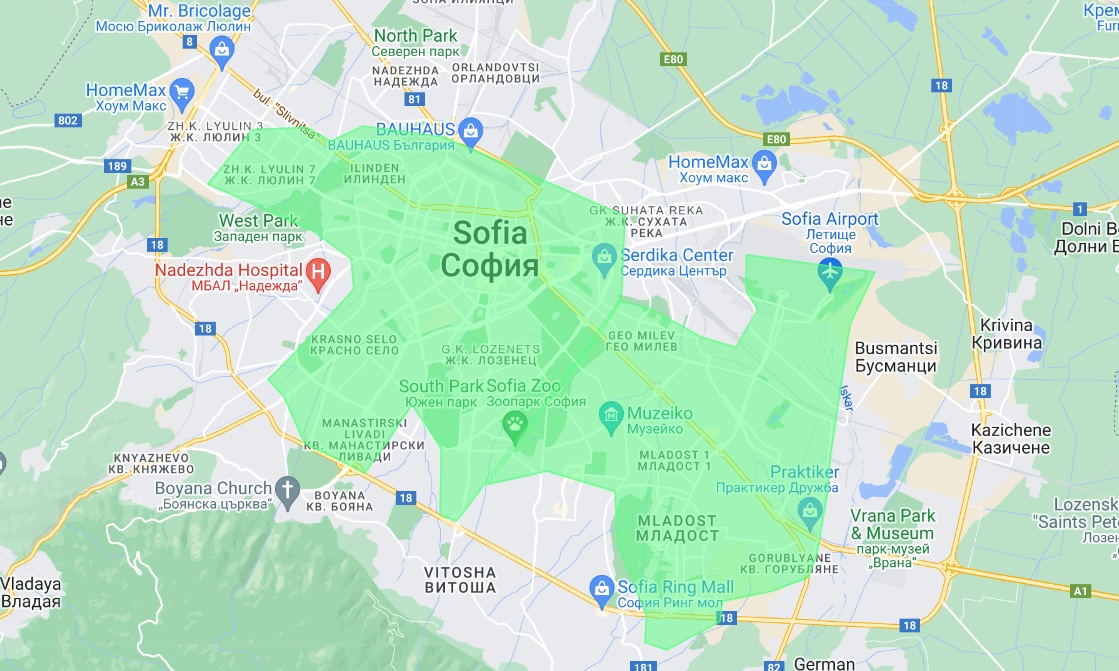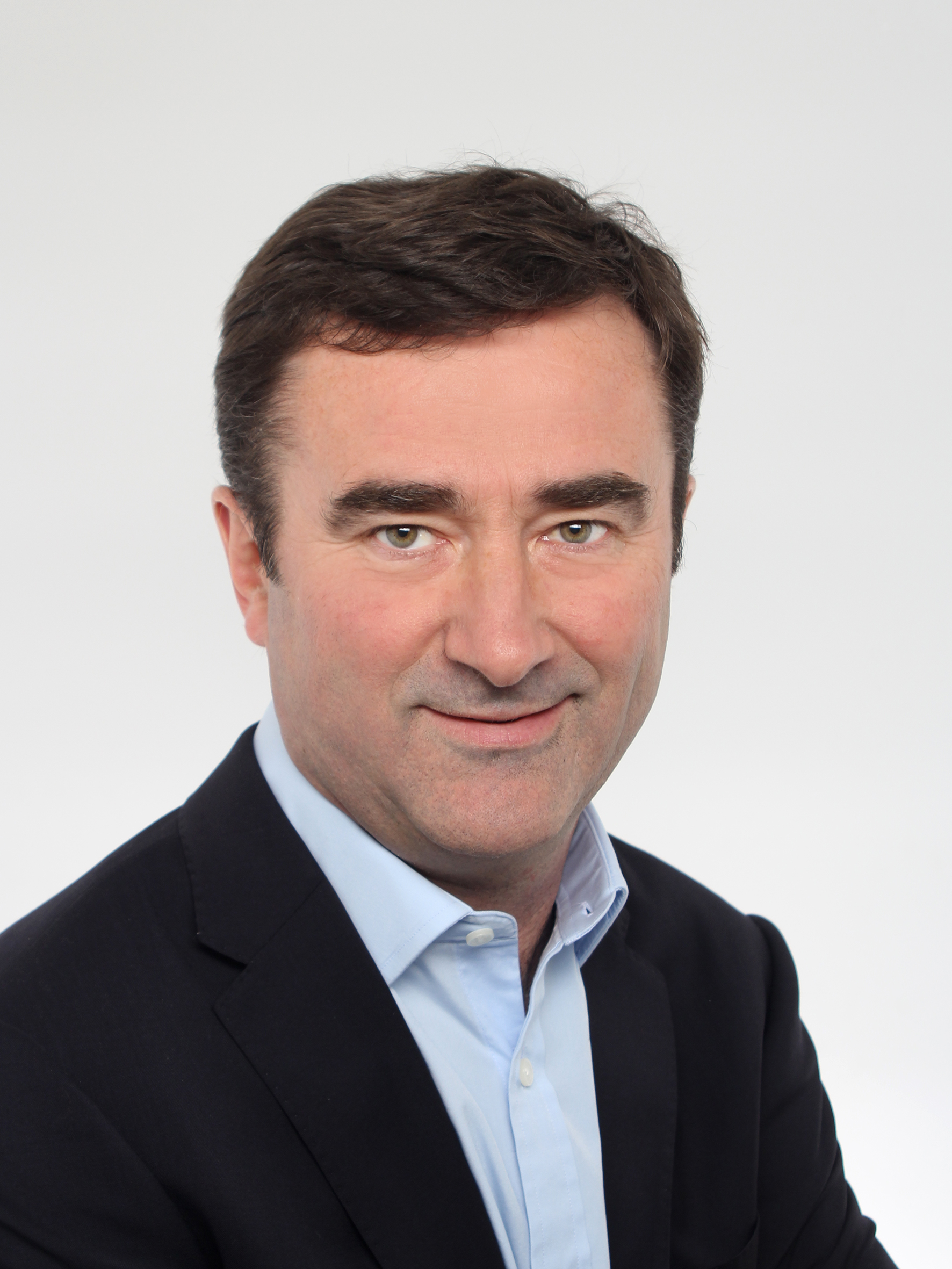Telecoms
Networking
News
Telecoms
Unified Communications
CMC Networks deploys satellite connectivity for business continuity
CMC Networks, a global Tier 1 service provider, has added Low Earth Orbit (LEO), Medium Earth Orbit (MEO) and Geostationary Orbit (GEO) satellite connectivity to its portfolio of solutions. This multi-orbit approach addresses the diverse connectivity needs of remote regions and challenging environments across Africa and the Middle East, removing the limits on digital transformation.
On 15 March 2024, Africa saw another connectivity incident involving a major internet outage affecting West and Central Africa, caused by a break in submarine cable systems. Four of the nine subsea cables that connect South Africa to the rest of the world were reported as damaged due to incidents on either side of the continent.
During this time, South Africa’s internet infrastructure also experienced significant issues. This event underscored the vulnerabilities of submarine cables, which are critical infrastructures for internet connectivity across continents. CMC Networks uses multiple submarine cable systems and therefore could divert traffic and use optimal routes to bypass the outage.
The company’s satellite solutions enable wide-reaching, high-performance and resilient networking, utilising constellations from world-leading providers. The distributed nature of the constellations adds redundancy and minimises downtime on customers’ networks, improving business continuity and enhancing user experiences, reducing the reliance on subsea cable infrastructure.
“Our goal at CMC Networks is to accelerate digital transformation across Africa and the Middle East, no matter the location. With the addition of LEO, MEO and GEO satellite solutions, we can provide seamless connectivity across geographies and during network and power outages,” says Marisa Trisolino, CEO at CMC Networks. “The recent damage to subsea cables and the subsequent disruption to businesses across South Africa has highlighted the need for a wide variety of connectivity options and digital infrastructure that has the resiliency to ensure business continuity during unforeseen events. Our satellite solutions enable service providers and enterprises to manage risk and maximise uptime.”
Its LEO satellites sit just over 1,000km above the Earth’s surface, providing ultra-low latency connectivity for a primary or backup connectivity solution, and consumer Internet use cases such as high-frequency trading, high-performance computing applications and more, with a round-trip delay (RTD) of +-80ms. The MEO satellites have an altitude of 8,000km, with 150ms low latency connectivity and a larger Earth view. This provides fibre-like broadband performance for enterprise-grade networking. The GEO satellites orbit 36,000km from Earth, maintaining a fixed position. These satellites provide reliable connectivity for less-latency-sensitive applications and services such as broadcast TV and low-speed data communication.
“Recent outages show that service providers and enterprises need diverse connectivity options. Networking is mission critical and networking strategies must include multiple backup connectivity that can be delivered with a simple and seamless model,” says Geoff Dornan, CTO at CMC Networks. “Our network supports a wide range of LEO, MEO and GEO use cases across Africa and the Middle East which is a real value-add for customers looking to add additional redundancy to their networks. You can’t predict what will happen across your network, but you can be proactive and prepare to adapt.”
Isha Jain - 21 March 2024
Networking
News
Telecoms
Altnets and ISPA's report looks at the full fibre supply chain
Altnets and the Internet Services Providers' Association (ISPA) have announced the publication of the 2024 Telecoms Procurement Research Report, which looks in depth at the current and future issues affecting the UK’s full fibre network providers.
The report reviews the UK full fibre broadband sector in terms of the various challenges and opportunities that exist in the sector for internet service providers (ISPs), offering a valuable perspective on its trajectory. Altnets joined ISPA as a Procurement Partner at the start of 2023 and continues to work closely with the organisation to support the UK’s telecoms industry.
Together they have provided a thorough understanding of the sector's current status and the events that have shaped its development. The report addresses the prior setbacks ISPs have encountered in the deployment of fibre infrastructure and highlights the crucial role of robust procurement strategies in influencing the success of the sector. It allows industry leaders to gain valuable insights into the intricacies behind the sector and deepen their understanding of the differing elements that influence the overall fibre landscape.
The report covers a wide range of topics, including:
Product manufacturing
Socioeconomic factors
Consumer take-up
Geography
Consolidation and attracting investment
Ramping up versus restraints in industry regulations
Skills shortages
Global competition
It includes a detailed analysis of these topics, having consulted with a range of industry experts who provided their valuable insights. Each of the individuals featured throughout the report, and their respective companies, are considered to be leaders in the sector and are known for their extensive knowledge and experience in the fibre sector.
One such contributor is Helen Wylde-Archibald, CEO of the southwest-based ISP Wildanet, who offers valuable comments regarding the importance of engagement with the supply chain. Helen’s mission is to combat digital inequality by providing fast and reliable fibre internet to homes and businesses in rural communities. Additionally, Kevin Moulton, the UK Sales Director for Fibrain, comments on the impact of current skills shortages on the industry, a key challenge for ISPs.
“This research report, a collaborative effort between distinguished telecom experts, looks into the future of the market specifically focused on independent ISPs,” shares ISPA Chairman, Steve Leighton. “During its creation, we engaged with key sector figures including ISP CEOs, manufacturers and finance specialists. We extend our gratitude to all those who actively participated in this report by sharing their insights and contributing to creating something that will be of real value to UK industry professionals.”
Paul Britnell, Co-Founder and Director of Altnets, says, “The last decade has presented unprecedented challenges to our industry, therefore, the need for a secure and sustainable supply chain has become more pronounced than ever. Its resilient response to past challenges highlights the telecom sector's adaptability, yet there is a need for continuous learning and ongoing effective engagement with supply chains.”
“As society transforms more and more into a digital landscape, where fast broadband is essential for every UK resident, connectivity is paramount for societal advancement. Networks must evolve and adapt their network operations continuously, utilising new and emerging technologies to ensure optimisation, continuity, and security of their essential assets.”
The conclusions of this report not only act as an evaluation tool for the current state of the UK fibre sector but also provide an insight into the future of fibre in terms of reaching the target of connecting every nationwide property by 2030.
The full report can be viewed here.
Isha Jain - 25 January 2024
Edge
Networking
News
Telecoms
NTT announces new PoP in Denver, Colorado
NTT has announced the expansion of its tier-one global IP network with a new Point-of-Presence (PoP) in Denver, Colorado, at CoreSite’s DE1 data centre facility.
This expansion will enable NTT and its global IP network division to further scale its portfolio of global IP solutions to internet, cloud, hosting, CDN and IT service providers and content-oriented companies in this strategic market.
The PoP will also support the growing demand for high-quality IP services from global companies and organisations that have established headquarters and operational centres in the Denver area. Additionally, the energy, transportation, media, financial services and industrial sectors, all key drivers of Denver’s vibrant economy, will benefit from more global connectivity and networking options.
NTT’s clients at CoreSite’s DE1 facility, which is strategically positioned in the centre of several key national and regional network fibre plants, will be able to connect at numerous capacity levels with diversity and direct connections to multiple points in the global IP network to ensure the highest reliability and the lowest latency in internet services.
“The new PoP in Denver takes our global backbone into one of North America’s largest technology and communications hubs,” says Michael Wheeler, Executive Vice President of the Global IP Network division at NTT. “Internet-centric businesses and organisations operating in the area will have direct access to our tier-one network and the high-performance IP solutions they need for their content, data, hosting, cloud and other bandwidth-intensive applications.”
“As a leading hybrid IT solutions provider, CoreSite is pleased that NTT and its global IP network have chosen to expand their presence in our Denver data centre campus and join our robust carrier ecosystem where businesses ranging from enterprises to digital platforms can benefit from NTT’s direct IP access,” says Juan Font, President and CEO of CoreSite, SVP of US Tower. “Through this expansion, NTT’s extensive global footprint and diverse set of connectivity solutions will provide great value to our customers.”
Click here more latest news.
Isha Jain - 25 August 2023
Cloud Computing & Storage
Data Centres
Telecoms
Unified Communications
Indonesia’s BBPPT selects Spirent for IP network validation
Spirent Communications has announced that Indonesia’s new Telecommunication Equipment Testing Center (BBPPT) has selected it to conduct high-speed Ethernet network equipment and electromagnetic compatibility (EMC) testing.
Utilising Spirent TestCenter enables labs to facilitate advanced testing features that include high scalability, automation, and real-time reporting for complex network systems.
Located in Tapos, Depok, West Java, the BBPPT is being developed by Indonesia’s Communication and Information Ministry. The laboratory will be completed by the end of the year and begin operations early in 2024 to provide telecommunication equipment and device testing. The aim of the centre is to be able to protect and maintain the quality of equipment, and guarantee that tools and devices intended for use in Indonesia meet the exacting technical requirements demanded by next generation communications networks.
The company’s partner on the project, Unitronic Jaya, says that Spirent was chosen by the BBPPT because it is recognised as a leader in the field of network testing, and is backed by the strong local knowledge and IP network engineering expertise of its partner.
Churn Hoong, Country Manager for Spirent’s Southeast Asia region, says, “We are pleased to be working with the rapidly developing BBPPT project to help ensure high-level IP network testing services that will benefit Indonesia and neighbouring countries. Spirent TestCenter will play an important role by providing the labs with accurate and reliable test results that are essential for ensuring the quality and performance of the ICT equipment.”
The Spirent TestCenter is an end-to-end test solution delivering high performance with deterministic answers. Service providers, network equipment manufacturers (NEMs) and enterprises use it to test, measure, and validate its networks and deploy services with confidence – from traditional performance testing to rigorous analysis of virtualisation, cloud computing, mobile backhaul, and high-speed Ethernet.
BBPPT is the master laboratory under the MCIT in Indonesia. When completed, it will be one of the sophisticated in Asia, with six laboratories outfitted with cutting-edge equipment to provide a testing ground for next-gen communications equipment.
Isha Jain - 29 June 2023
Security
Telecoms
Neterra stopped nearly 500,000 DDoS attacks in 2022
Neterra protected its customers from 488,151 DDoS attacks in 2022. To do this, the company implemented various effective solutions that include a cloud platform, specialised hardware equipment, and a combination of the two. Of the total number of attacks, its cloud platform stopped 135,590 and its hardware stopped 352,561.
DDoS attacks aim to disrupt (wholly or partially) user access to the services or equipment of a specific company - targeted as a victim. Often, for example, the victim's website becomes unavailable, loads slowly and returns errors.
While the company is under attack and struggling to restore normal operations, the perpetrators take advantage of the breach to gain access to its resources. Most DDoS attacks aim to steal data, money, or intellectual property.
Customers of Neterra's DDoS protection service can monitor statistics of attacks against them in real time through the unified monitoring system, as well as make periodic inquiries, for example - the number of attacks daily, monthly, and annually. They can also see what each of the attacks looked like.
In addition to protection from DDoS attacks, Neterra offers complete solutions for enterprises for both cyber security, such as backup and ransomware protection, and for connectivity - dedicated internet access (DIA), data centre and managed services, IT service and resource rental.
Beatrice - 6 March 2023
News
Telecoms
Macquarie Telecom delivers 17 consecutive halves of growth
Macquarie Telecom Group has announced its results for the half-year, which ended 31 December 2022.
Chairman, Peter James, says, “This result represents our 17 consecutive half of EBITDA growth, an outstanding achievement demonstrating the continuing momentum in our business and the capability of our people.”
Key Points
• 17 consecutive halves of profitable growth.
• Revenue of $172.5 million, an increase of 16% on 1H FY22 ($149.3 million).
• Earnings before interest, tax, depreciation, and amortisation (EBITDA) of $51.3 million, an increase of 26% on 1H FY22 ($40.5 million).
• Net profit after tax of $8.5 million, an increase of 133% on 1H FY22 ($3.7 million) reflecting the increased profitability across all segments.
• Capital expenditure for 1H FY23 was $33.2 million (1H FY22: $68.9 million) driven by Growth Capex of $15.0 million, Customer Related Capex of $11.6 million and Maintenance Capex of $6.6 million.
Chief Executive David Tudehope, says, “We are very pleased to deliver another strong result for our shareholders. We continue to grow by staying ahead of emerging trends in the technology sector and investing in the right solutions for our customers. We pair the best technology with the best customer service and operate in markets that continue to have significant growth potential, such as digital infrastructure and cyber security.”
Outlook
• FY23 EBITDA is expected to be approximately $102 to $104 million which includes Macquarie Data Centres expected EBITDA of $32 to $33 million. Continuing investment in Cloud Services & Government and Macquarie Data Centres underpins this profitable growth.
• ATO contract extension demonstrates the continued demand from our Federal Government Agencies for cyber security services, providing high confidence for future growth in the Government business.
• Site preparation works are underway to prepare the Macquarie Park Data Centre Campus in anticipation of obtaining the DA for IC3 Super West.
• Telecom operational efficiencies will continue.
• Net debt to be reduced in FY23.
• FY23 Total Capex is expected to be between $72 - $76million.
• FY23 Depreciation is expected to be between $63 and $67 million.
Beatrice - 22 February 2023
Data Centres
IT
Security
Telecoms
Vívaro Telecom teams up with MDC Data Centers in San Diego
MDC Data Centers has announced that its new data centre in San Diego will be ready to begin operations in Q2 of 2023. This new location is announced in partnership with Vívaro Telecom, a major Mexican network leader in telecommunications, media, IT solutions, and cyber security with more than 55 years of operations.
The new data centre will become the first of its kind in Southern California, and will provide redundant access to the company's fibre-crossing solutions that connect San Diego to the state of Baja California in Mexico with two independent routes, via Otay Mesa and via San Ysidro.
With a model proven in different markets, MDC San Diego enters into agreements with new founding members of the site to foster more interconnections to the border and bring better connectivity between the two countries.
A data centre built for its customers
During an annual customer appreciation event held in Mexico, Juan Salazar, CEO of MDC Data Centers, announced the beginning of physical and technical adaptations at the company's new facility in San Diego, California. Juan expressed his gratitude for the trust shown by MDC Data Centers' customers, and emphasised his commitment to turn MDC San Diego into a neutral interconnection point at the border.
Vívaro Telecom joins MDC San Diego as a founding member, highlighting the importance of the site in covering Baja California's need for interconnection and developing solutions that allow breaking the technological isolation of the state with the centre of Mexico.
"At Vívaro Telecom, we believe that this new facility is a reflection of MDC Data Centers' commitment to neutrality and customer-centricity. It will expand the company's unique business advocacy to a new strategic market, creating new business opportunities for all participants in the ecosystem," says Gustavo Mario De la Garza Flores, CEO of Vívaro.
San Diego is a hub for technology and innovation, but also a key element in MDC Data Centers' strategy to continue promoting its border platform. The new site will provide the infrastructure needed for its customers' growth in local and international markets.
Beatrice - 18 January 2023
Infrastructure
Infrastructure Management
Internet
IT
Networking
Telecoms
Neterra launches a new fibre metro network in Sofia
Neterra has built and launched a new, fast and secure fibre metro network in Sofia, the capital of Bulgaria. It covers the entire capital, including all important business centres, central streets, and boulevards.
Through it, the company offers internet for businesses, protection from DDoS attacks, other connectivity services and media streaming. Qualified engineers are responsible for maintenance and provide technical support 24/7.
Neterra's new network has several major advantages compared to the networks of other operators. It is the only fibre network that reaches all the data centres in Sofia, enters them, and connects them. This includes both Neterra's data centres and those of other operators.
Another benefit is that cables are run deeper underground and in protected conduits to prevent risks of outages.
For the Sofia fibre metro network, the company uses the most modern and high-quality equipment - from cables to optical distribution frames (ODF) and connectors. As a result, the connection is of exceptional quality.
In the capital of Bulgaria, Neterra maintains over 550 active business services and consciously invests in reliable components.
Thanks to the large capacities set in advance, Neterra's metro network is expected to meet the needs of businesses in Sofia for years to come.
At the same time, it is connected to the Bulgarian core fibre network of the company, which connects all major Bulgarian cities such as Varna, Veliko Tarnovo, Burgas, Plovdiv and Ruse.
Beatrice - 3 November 2022
Data
Internet
Networking
Telecoms
Selecting the right radio frequency for telemetry applications
By Ian Loudon, International Sales and Marketing Manager at Omniflex
The UK’s radio spectrum is more cluttered than ever. Space on bands is already at a premium and, with more and more businesses setting up radio equipment, demand will only increase. For many businesses, the need to pay a fee for exclusive transmission rights means operating on a licensed band is undesirable. Instead, many opt for license-free bands that are open to everyone. As a result, they can transmit essential data while complying with legislation such as the new Radio Equipment Regulation (RER), which sets the standard for the UK’s radio communications.
Until January 2018, there were just eight frequencies for license-free radios in the UK, ranging from 446.00625MHz to 446.09375MHz. Since then, the frequency spectrum has expanded significantly. For example, the 5GHz band runs from 5150MHz to 5850MHz, before being broken down into three A-C bands. Two of the most common unlicensed bands in the UK are 2.4GHz, which is the same frequency as WiFi and Bluetooth, and 868MHz.
Higher frequencies
When selecting higher frequencies such as 2.4GHz, these will often have more ‘channels’ available than lower RFs, meaning devices can be set to avoid channels that are already occupied by other equipment. The bandwidth is also greater, and businesses can transmit more data faster than when operating on a lower frequency. For example, wireless SCADA systems typically use very high frequencies (VHF) and ultra-high frequencies (UHF) over a long range and rely on fast transmissions.
However, the higher the frequency the shorter the range, and the more vulnerable to interference. Ideally, businesses will select these bands for indoor applications where there are shorter distances between radio equipment. Walls, rain and even fog can negatively impact signal integrity, so high RFs are often unsuitable for outdoor settings.
In recent years, the 2.4GHz spectrum has become even more crowded, with more businesses taking advantage of non-exclusive access. Therefore, when installing radio equipment, there is already a considerable number of devices on the same band. The inclusion of additional items could make the band more vulnerable to interference. Consequently, more people have started using 5GHz for WiFi applications because it can carry more data and faster than 2.4GHz. Nevertheless, its narrow coverage area and lack of penetrability means its application is often confined to residential settings.
Lower frequencies
In contrast, 868MHz can transmit across longer distances and penetrate most objects. Although it requires a larger antenna than 2.4GHz, it has a range of up to 800m and a lower power consumption. While mobile phones, WiFi networks and other similar devices operate on 2.4GHz, 868MHz can support much of the radio equipment found in industrial settings, such as remote sensing, security and alarm systems.
Despite offering nonexclusive access, interferences are rare on 868MHz bands. While open to all devices, 868MHz is only really used for industrial, scientific and medical applications, meaning there’s less competition from neighbouring sites for bandwidth. However, there is a trade-off. Although lower frequencies have a larger transmission range, they also have a longer delay spread, which can result in a degraded signal due to interference. Therefore, although 868MHz and other frequencies like IEEE 802.11af can be used in outdoor environments, vegetation and weather remain problematic and multipath is introduced, increasing the delay spread further.
When choosing between higher and lower frequencies, power is an important consideration. The RER prohibits interference by preventing users from amplifying their signal to block out others, and every frequency has a different maximum permitted transmission level. Regardless of the selected frequency, the gain of the antenna cannot result in equipment exceeding the effective radiated power (ERP) permitted for that band. For instance, the maximum ERP on the 868MHz frequency for short-range and wideband devices is limited to 25dB, with a duty cycle of 10%.
Weighing up the options
Higher and lower frequencies have their benefits and drawbacks, but the proof really is in the application. When specifying an RF for any industrial equipment or telemetry devices, it’s important to know the required transmission range, what the surrounding obstacles are and the likelihood of attenuation. Before purchasing any radio equipment or telemetry devices, such as remote monitoring systems for industrial settings, it is important to work with an experienced, flexible partner that offers technology that can adapt to the different bands.
A sound partner can integrate radio equipment and telemetry systems over different RFs seamlessly, providing support from the initial enquiry to purchasing and installation. Omniflex offers the Teleterm M3R, a small programmable RTU that is configurable and allows users to choose between analogue and digital inputs and outputs. Facility managers can integrate them with SCADA systems to achieve wireless connectivity in different license-free bands.
In the UK, most industrial facilities rely on unlicensed bands, and facility managers must choose between higher frequencies like 2.4GHz for shorter-range, indoor communications and 868MHz for longer distance transmissions. There are various application-specific considerations when specifying an RF, including the surroundings and likelihood of attenuation. When purchasing any radio equipment, facility managers can make the process easier by working with a partner that offers flexibility in their products.
Beatrice - 11 October 2022
Cloud
Infrastructure
IT
News
Telecoms
DataQube announces Claude Sassoulas as new CEO
DataQube has appointed Claude Sassoulas as its new Chief Executive Officer (CEO) to head up the company’s next stage of corporate growth and explore its expansion plans.
Claude has over 25 years’ experience in building and running major B2B organisations within the ICT, telecom infrastructure, managed services, and cloud sectors. Prior to joining DataQube, he spent four years as COO at InterCloud. He was also the Managing Director (Europe) at Tata Communications for 13 years, where he grew the business from the ground up to a $500m company.
Under his leadership, DataQube is looking forward to building on the progress it has made so far in the edge computing space and continuing to establish its novel offering as the go-to solution for localised data processing. Over the forthcoming weeks, he will be bolstering DataQube’s commercial and technical expertise through targeted recruitment and overseeing the establishment of a global reseller and partner network.
“I’m delighted to be joining this disruptive company during such an exciting growth phase,” says Claude. “Demand for real-time data handling is growing now that 5G rollouts and the technologies they support are gaining momentum, and existing edge facilities are struggling to deliver. Our solution’s flexible architecture, HPC capabilities, green credentials, and compelling price point are set to be a real game changer in the data centre industry.”
“Claude’s proven ability to scale businesses in telecoms and cloud infrastructure will be invaluable to the commercialisation and development of DataQube,” says Anne-Laure de la Roche, Head of Asset Management at RGREEN INVEST. “Global digitalisation is driving the need for sustainable data handling at the edge, and DataQube is the optimal solution.”
Unlike conventional data centre installations, DataQube pods can be fully up and running within a six-month timeframe, for 50% less Capex and with one of the lowest PUE in the industry. These performance and sustainability advantages, together with the solution’s person-free design and lightweight structure make installations possible in a diverse range of locations where traditional installations are neither practical nor feasible. Moreover, DataQube’s efficient use of space and optimised IT capacity, along with its ability to dramatically lower overall energy usage and CO2 emissions, is setting a new standard in the industry.
www.dataqube.com
www.rgreeninvest.com
Beatrice - 30 August 2022

Head office & Accounts:
Suite 14, 6-8 Revenge Road, Lordswood
Kent ME5 8UD
T: +44 (0)1634 673163
F: +44 (0)1634 673173









